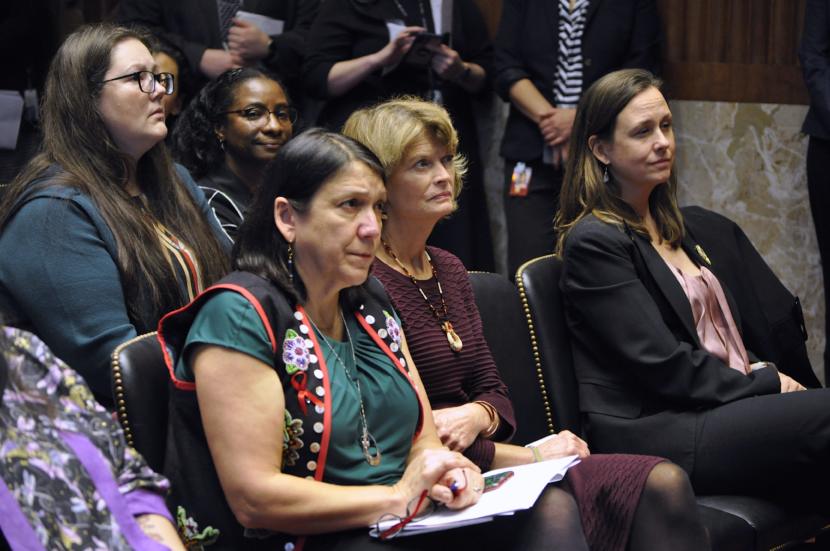
The victims’ families and communities had long felt the tragedy: Alaska Native women are murdered and go missing at rates that are far too high.
But it took a 2018 report from two researchers in Seattle to get the gears of the federal government turning. Sen. Lisa Murkowski, R-Alaska, said the report has focused national attention on the horrifying reality that Native women are murdered at a rate 10 times the national average.
She said it helped “being able to put numbers to what we knew from the stories.”
Murkowski spoke Thursday at a briefing on the issue of missing and murdered Indigenous women, now often known by its acronym: MMIW.
Native leaders and justice advocates packed a Senate hearing room for an update on what Congress and the Trump administration are doing to address the problem.
Murkowski is sponsoring Savanna’s Act, which aims to improve data collection, and co-sponsoring the Not Invisible Act, to target the trafficking of Native people.
And last year, for the first time, Congress appropriated funds for MMIW, Murkowski said.
“Six-point-five million dollars, dedicated solely and specifically to dealing with the issue of murdered and missing Indigenous women, to provide for tracking and for data, for forensic equipment,” the senator said.
President Donald Trump signed an executive order last year establishing a multi-agency task force.
U.S. Interior Department Assistant Secretary for Indian Affairs Tara Sweeney said one of the goals is to help the families of the victims.
“What we’ve heard time and time again, through these … roundtables, has been, ‘We report it, and then we don’t hear anything. We can’t find out the status of this case. We don’t know who to talk to,’” Sweeney said.
Trump’s 2021 budget requests $3 million for the Operation Lady Justice task force on missing and murdered Indigenous women.
